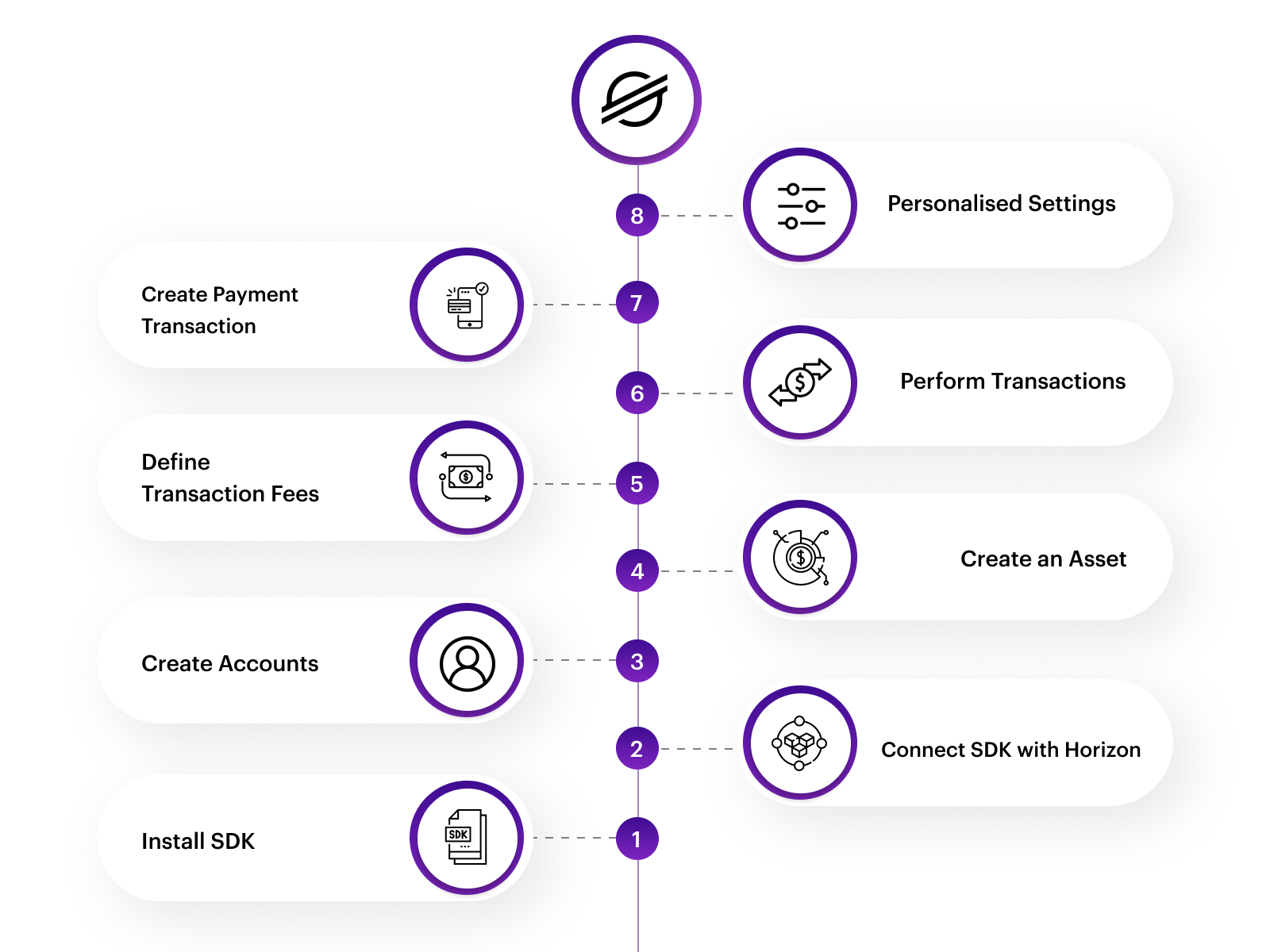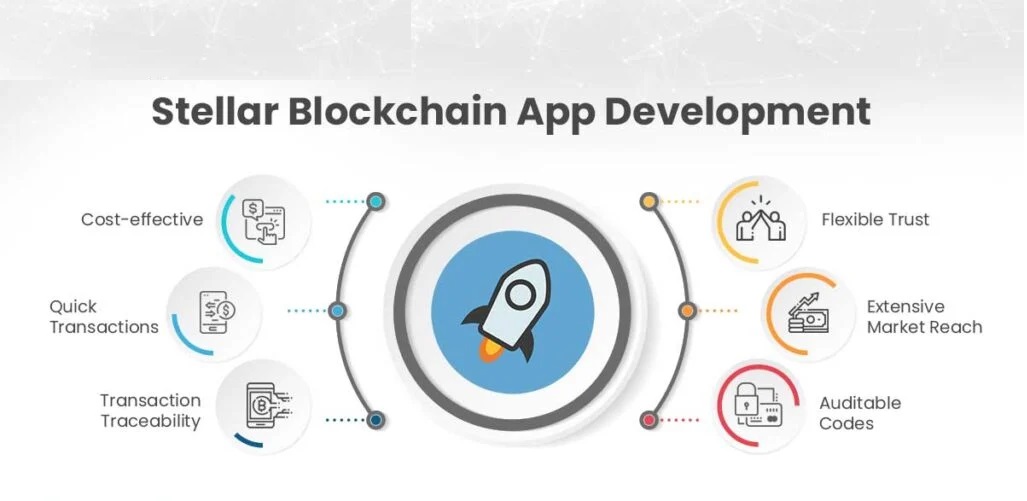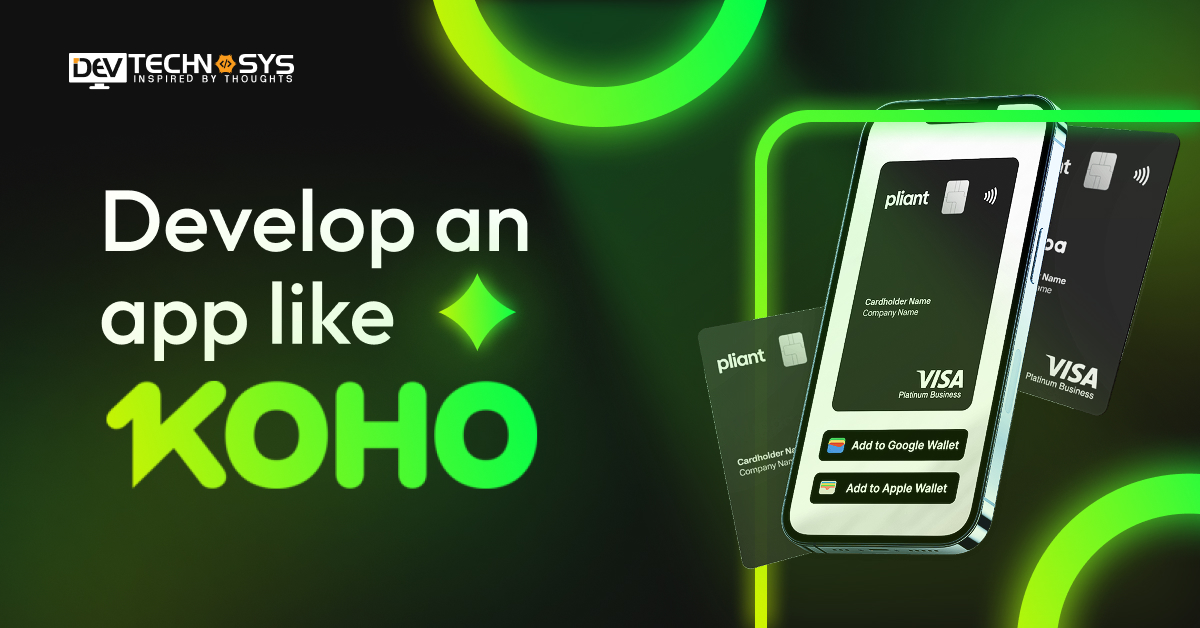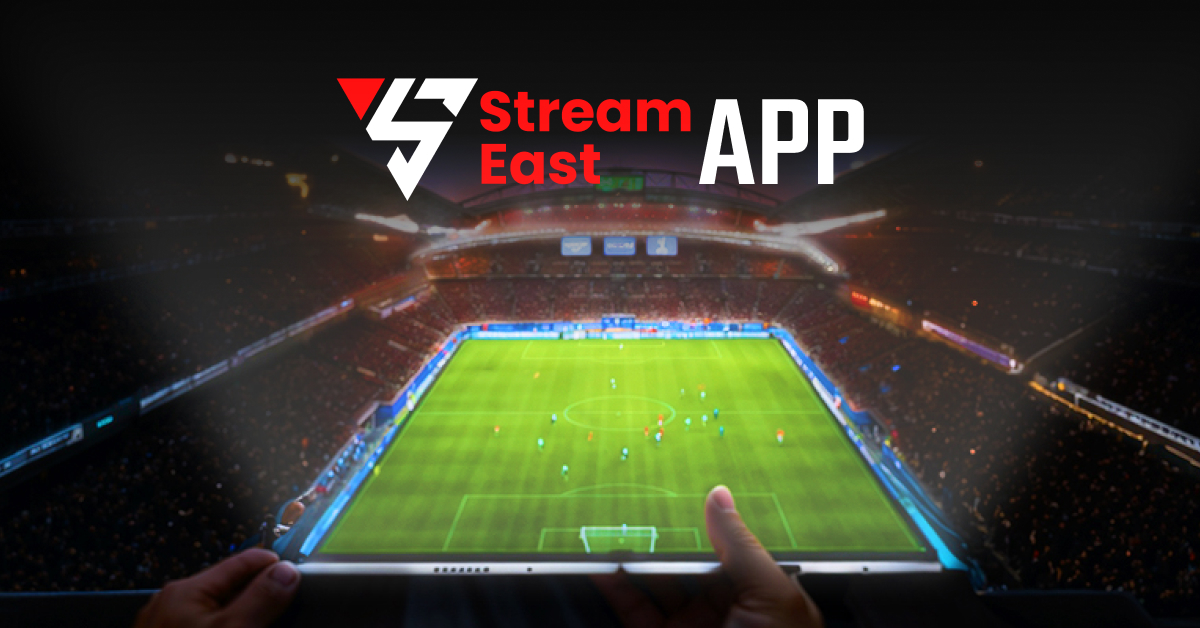For the past few years, blockchain has gained immense popularity and demand. Today, blockchain technology is used in multiple industries, and its use case in finance as cryptocurrencies was one of the first applications.
Businesses will be driven toward innovation in blockchain payments. Today, the world is becoming more globalized, and therefore the need for cross-border payments increases.
Among all the blockchain networks available, Stellar Core is a significantly distributed technology that enables everyone to create quick and affordable financial solutions.
As a result, there is a high demand for Stellar blockchain development in today’s competitive world. So, let’s discover how to build an app on the Stellar blockchain. Read this blog further…
What Is Stellar?
Stellar blockchain is an open-source protocol that enables users to exchange money and tokens using SCP (Stellar Consensus Protocol). It is one of the hundreds of networks that transmit and store cryptocurrencies.
Over the past 10 years, numerous other virtual currencies and platforms have notched up tremendous increases and user bases, while bitcoin has gotten the most attention. One of these is the stellar blockchain, which has the lumens coin.

Today, cross-asset and inexpensive value transfers are made easier by the architecture of the Stellar blockchain system. Stellar’s open-source payment technology has similarities to Ripple, a real-time gross settlement currency. Even the founder of Stellar, Joyce Kim and Jed McCaleb, co-founded Ripple.
The Stellar Consensus Protocol, which Stellar later developed, caused fundamental incompatibilities between the two platforms. Through the SCP, Stellar evolved into an open-source platform while Ripple remained a closed system.
This is why, businesses often want to build an app on Stellar blockchain. So, let’s look at the development process mentioned by the blockchain development services experts.
Step-by-Step Process to Build An App on Stellar Blockchain
Want to build an app on Stellar blockchain? Here’s how you can develop a perfect application of Stellar-based blockchain technology.

#Step 1 – Install SDK
The first step to developing a Stellar blockchain is installing an SDK for the technology you want. Installing the Python SDK is necessary, for instance, if you wish to create an app that uses Python.
The main SDK and all of its dependencies will be installed using this program. To write a Stellar program, you must offer an API for the networking layer. You can also create and sign transactions, talk with a Stellar Horizon instance, look at network history, and perform all of the above activities.
#Step 2 – Connect SDK with Horizon
Once you install the Python SDK, connect it to the Horizon network. It is a client-facing API server used for the Stellar blockchain ecosystem. Horizon acts as a bridge between the Stellar core and apps users can access on the Stellar network. Utilizing Horizon enables businesses to submit transactions to the network, subscribe to the event streams and check the accounts’ status.
Ledger endpoints on Horizon are utilized to stream ledger data. It supports streaming ledgers, operations, accounts, transactions, payments, and trades via multiple endpoints. The Horizon object from the Python Stellar SDK can be imported first.
The next step is to develop two functions: One to handle Horizon responses and the other to use the streaming mode to call the horizon or ledgers endpoint.
#Step 3 – Create An Account
The next step is registering for an account on the Stellar Network after the SDK connects to the Horizon Server. In Stellar, accounts store all your funds and allow you to send and receive payments.
So, when you hire blockchain developers to build an app on the Stellar blockchain, ask them to create an account properly.
Every account associated with Stellar blockchain development has a public key and a secret seed. Stellar uses public-key cryptography to guarantee the security of every transaction.
The hidden seed, on the other hand, is a secret piece of data that helps you control your account. The seed should not be distributed to anyone and resembles a lock’s combination.
Once the user gets both seed and public key, they can create an account. Also, to disable unwanted account creation, every account has a minimum of 1 lumen. So, the users cannot make the transactions if they don’t have a lumen.
#Step 4 – Create Assets
The distributed network of Stellar blockchain is used to track, hold, and transfer different types of assets, such as – euros, dollars, stocks, gold, bitcoin, and other tokens of value. On the Stellar network, any asset can be traded and exchanged for the other asset.
Other assets on the Stellar are –
Asset Type: BTC or USD
Issuer: Account creating the asset
Currently, three types of assets in the stellar network are available:
- Native XLM asset (ASSET_TYPE_NATIVE)
- Issued assets with asset code of12 characters (ASSET_TYPE_CREDIT_ALPHANUM12)
- Issued assets with asset code of 4 characters (ASSET_TYPE_CREDIT_ALPHANUM4)
Use the static native() method to create a new native asset representation.
#Step 5 – Define the Transaction Fees
Small transaction fees and a required minimum account balance are required by Stellar to maintain network performance and prevent ledger spam. The Stellar platform supports transactions of any size up to a predetermined cap of 100 operations.
Regardless of which accounts are involved in each operation or who signs the transaction, Stellar deducts the charge from the source account.
#Step 6 – Make Transactions
The commands used to change the status of a ledger are known as transactions, including sending money, changing the settings for an account, creating offers, and more. Each transaction has a source account that covers the cost and assigns a transaction number.
One or more operations make up a transaction; each operation’s default source account is the transaction’s source account. New transactions are created using the Transaction Builder class. An account utilized as the transaction’s source account is given to it.
When the build() function on the Transaction Builder is called, the transaction increases the specified account’s current sequence number, which it uses as its sequence number.
#Step 7 – Create A Payment Transaction
Now, you can create, sign, and submit the transaction using the Python Stellar SDK. While creating a payment transaction, you can use multi-signature accounts. It will help you establish a transaction’s legitimacy while signing different public keys.
To achieve this, you will have to adjust the threshold levels. If you find the process difficult, hire experts to create a mobile app based on the Stellar blockchain.
#Step 8 – Begin Monitoring
Once you successfully complete all the steps mentioned above and set up the network properly, do proper monitoring to ensure that the network runs efficiently. Stellar Core blockchain offers crucial information businesses can use to monitor the node and identify all the potential problems.
Businesses can easily access all the available data relevant to monitoring while inspecting Stellar Core’s output and using commands. To ensure quick and easy monitoring, you can merge it with Alertmanager for automated notifications.
To check the overall health of the Stellar network, run $ stellar-core http-command ‘info.’ You can insert fields in the info: build, peers, protocol_version, ledger, and state.
How Does Stellar Blockchain App Works?
Stellar blockchain applications interact with the Stellar network through the Horizon API. It provides a standard UI for submitting transactions and querying the ledger’s state.
Developers can use a variety of programming languages and libraries to build applications that interact with the Horizon API, including JavaScript, Python, and Java.
To interact with the Stellar network, applications typically create and sign transactions using the Stellar SDK. The data is further submitted to the Horizon API for processing. The Stellar network then validates and processes the transactions, updating the ledger as appropriate.
Stellar blockchain applications can be used for various purposes, such as creating custom tokens, building decentralized applications, and facilitating cross-border payments. The speed and low cost of transactions on the Stellar network make it an attractive option for developers looking to build an app on Stellar blockchain technology.
Key Features to Build An App on Stellar Blockchain
Stellar is a blockchain platform designed for fast and affordable cross-border payments. So, if you are planning to build an app on Stellar blockchain, include the following features, such as –

1. Faster Transactions: Stellar’s consensus algorithm allows for near-instant transaction confirmation times.
2. Lower Transaction Fees: The transaction fees on the Stellar blockchain network are very low. It is something that makes the technology affordable for smaller transactions.
3. Secure and Decentralized: Like any other blockchain platform, Stellar is also a decentralized network, meaning no single entity can control it.
4. Smart Contracts: Stellar blockchain supports the creation of smart contracts, self-executing contracts with the terms of the agreement between buyer and seller being directly written into lines of code.
5. Multi-currency Support: Using the best stellar blockchain development, users can hold and transfer multiple assets, including fiat currencies and cryptocurrencies.
6. Compliant: Stellar has amazing built-in features that enable unified KYC and anti-money laundering (AML) processes. The technology has better asset control at the protocol level and enables issuer-enforced finality.
7. Stellar XLM: The Stellar blockchain network has a native currency, Lumens or XLM. The users using Stellar must keep a few Stellar lumens in an account. All the users get complete access to this amount.
These are some essential features required to build an app on Stellar blockchain that’ll help you create a perfect application. Now that you are well-versed with the features include them during Stellar blockchain development, P2P payment app development, or any other.
Uses Cases to Build An App on Stellar Blockchain
Like DApp development, Stellar blockchain technology is being used in different industries and is gaining immense popularity. Here are some of the popular use cases of Stellar blockchain.
1. Security Tokenization
Security tokens are special cryptocurrencies used to verify and protect property rights while facilitating all digital transactions for specific assets. The tokens hold the same benefit as the other digital currencies. The crypto security tokens will change the process of how the information is transferred in capital markets
2. Peer-to-Peer Payments
P2P payment apps have completely transformed the way of payment. The peer-to-peer account could replace credit and cash cards for local markets and online purchases. With the help of Stellar blockchain development, users can instantly transfer their money from one account to the other.
3. Collectibles Tokenization
Tokenization is the cornerstone of the contemporary digital economy. Billions of people utilize this blockchain technology daily, which is why there is a huge demand for blockchain development services. During the tokenization process, valuables are exchanged for tokens that accurately represent those assets. Transactions are now simpler and safer as a result.
Tokenization is already affecting lives and can change enterprises, despite its futuristic appearance. For many people, tokenization is an effective approach to acquiring treasured goods. The process streamlines procedures like cross-border transfers and facilitates deposit and withdrawal.
4. Financial Services Access
A brand-new blockchain network for international trade is called Stellar. Linking the banking industry’s digital payment rails with contemporary digital payment systems is compatible with achieving that goal. Regardless of where you are, stellar blockchain technology is ready to integrate into the banking sector.
These are the five amazing use cases to build an app on the Stellar blockchain. The list is unlimited as the demand/trend keeps changing with time.
Popular Stellar Blockchain Application Domains
Along with the capital market, Stellar blockchain offers solutions assisting organizations in completing all operations safely. While considering the unique qualities of the Stellar blockchain, one can see different platforms’ potential and uses.
- More currency anchors
- Mashups of APIs
- Plugin for merchants
- P2P financing for micro-insurance
- Cash transfers with conditions
- Loyalty point schemes
- Nonprofit donation mechanisms
- Currency of the community
- Tracking volunteer hours
Conclusion!
Numerous eminent international organizations are using Stellar’s blockchain development services, demonstrating the company’s dedication to promoting the adoption of blockchain technology.
This is now possible due to its open, decentralized network and mission-driven organizational structure. As a result, the Stellar blockchain is undeniably growing in popularity among consumers.
Now businesses simply have to know the cost to hire a blockchain developer, and then they are all set to build an app on Stellar blockchain technology.
Just make sure to get in touch with a reputed blockchain development company whose professionals can help you create a growth-driven business application.































